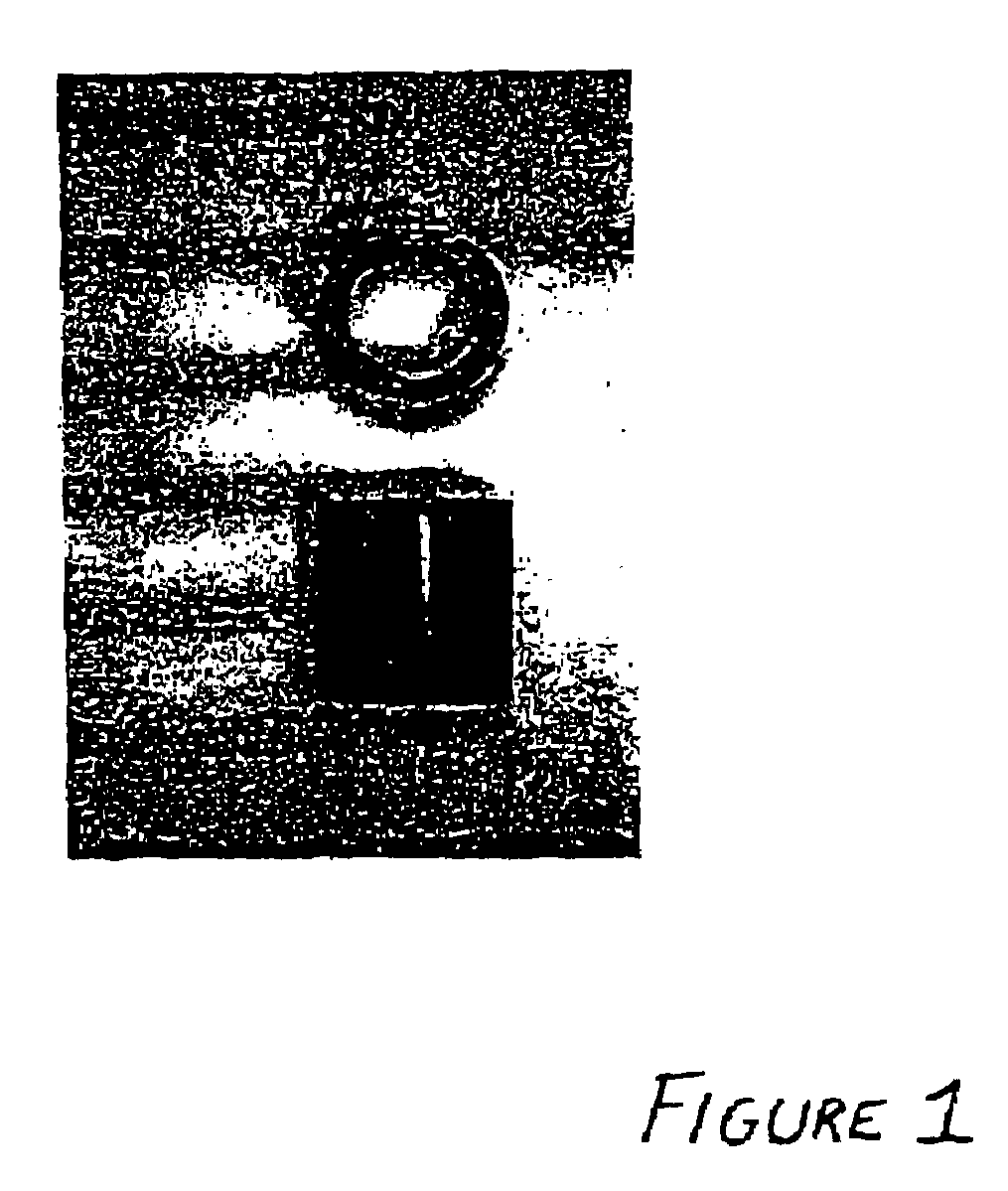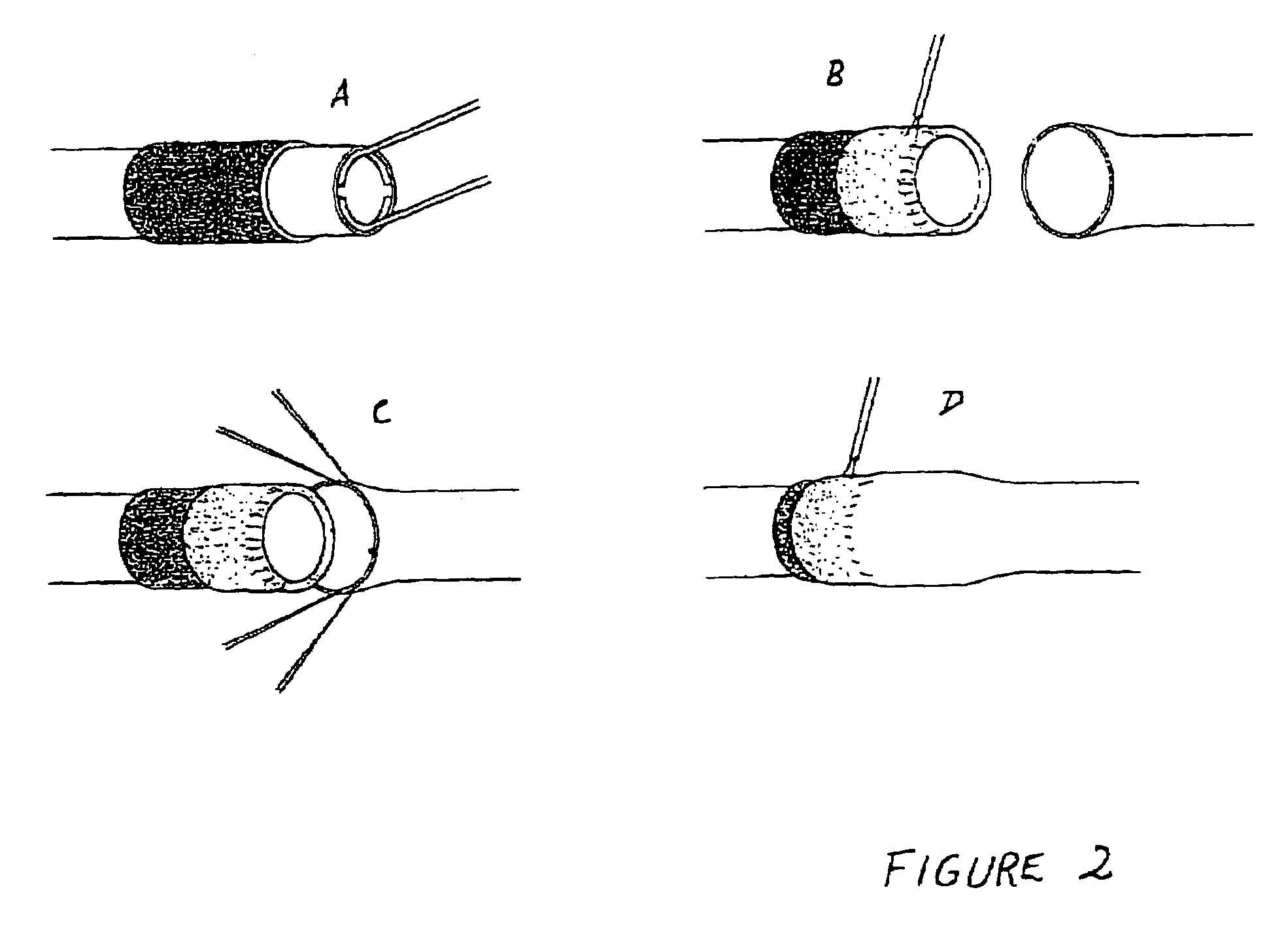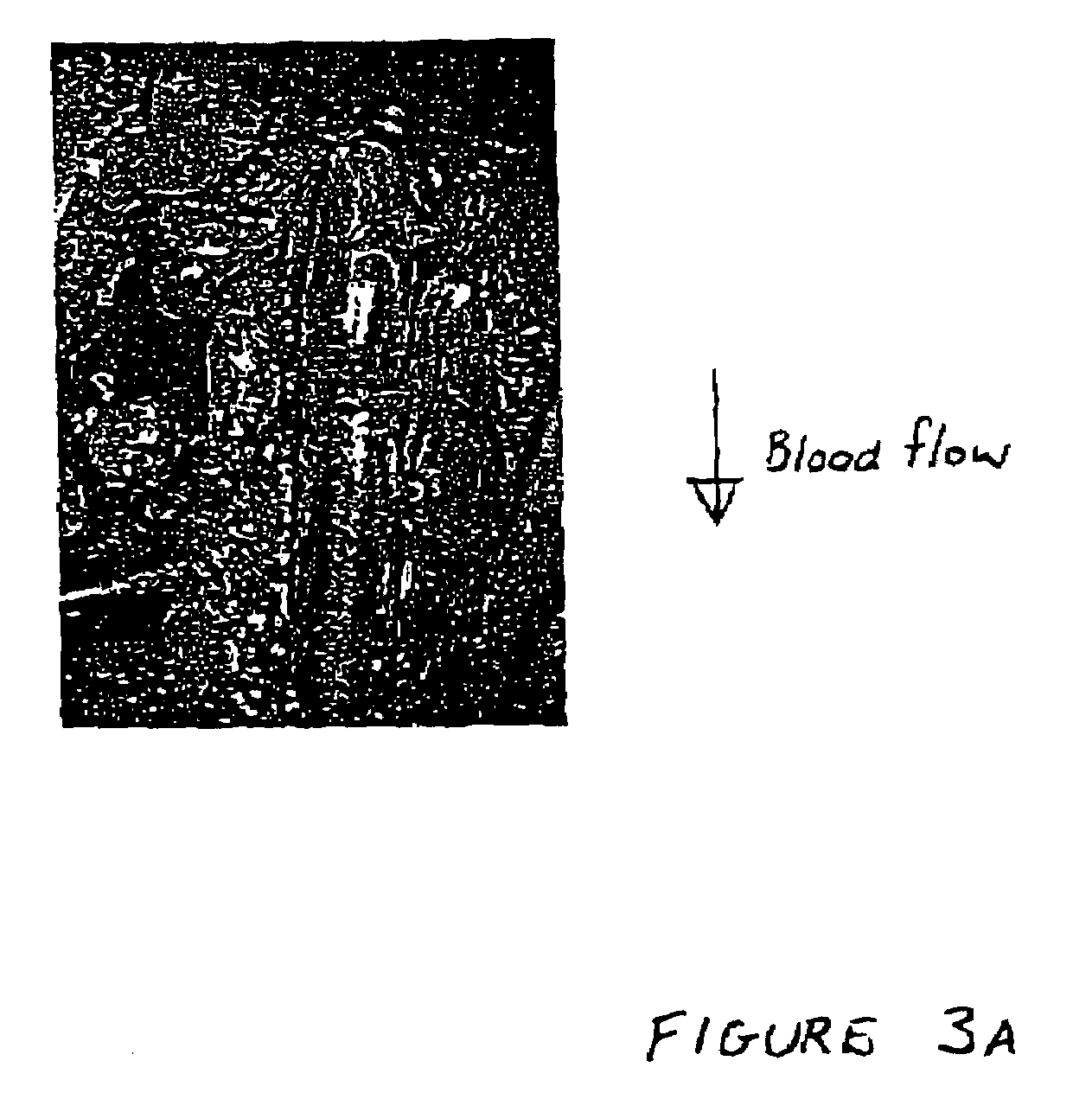Method of tissue repair II
a tissue repair and tissue technology, applied in the field of tissue repair ii, can solve the problems of inconvenient microsuturing, inconvenient microsuturing, and inability to make joints, and achieve the effects of reducing the difficulty of microsuturing, and improving the quality of tissue repair
- Summary
- Abstract
- Description
- Claims
- Application Information
AI Technical Summary
Benefits of technology
Problems solved by technology
Method used
Image
Examples
example 1
[0106]A total of 90 rats were divided into two groups randomly. In group one the anastomoses were performed using conventional microsuturing technique, while in group two the anastomoses were performed using our new laser welding technique. In addition, each of the two groups were divided into 5 subgroups and evaluated at different followup periods (10 min, 1 hour, 1 day, 1 week and 6 weeks). At these intervals the anastomoses were evaluated for patency and strength (tensile strength measurement) anastomoses in each subgroup were processed for light and electron microscopy.
[0107]All anastomoses were found to be patent. The mean clamp time of the anastomoses performed with conventional suturing was 20.6 minutes compared to 7.2 minutes for the laser activated welded anastomoses (p<0.001). The strain measurements showed a stronger mechanical bond of the sutured anastomoses in the initial phase. However, at 6 weeks the tensile strength of the laser welded anastomoses was higher compared...
PUM
| Property | Measurement | Unit |
|---|---|---|
| Temperature | aaaaa | aaaaa |
| Temperature | aaaaa | aaaaa |
| Temperature | aaaaa | aaaaa |
Abstract
Description
Claims
Application Information
 Login to View More
Login to View More - R&D
- Intellectual Property
- Life Sciences
- Materials
- Tech Scout
- Unparalleled Data Quality
- Higher Quality Content
- 60% Fewer Hallucinations
Browse by: Latest US Patents, China's latest patents, Technical Efficacy Thesaurus, Application Domain, Technology Topic, Popular Technical Reports.
© 2025 PatSnap. All rights reserved.Legal|Privacy policy|Modern Slavery Act Transparency Statement|Sitemap|About US| Contact US: help@patsnap.com



